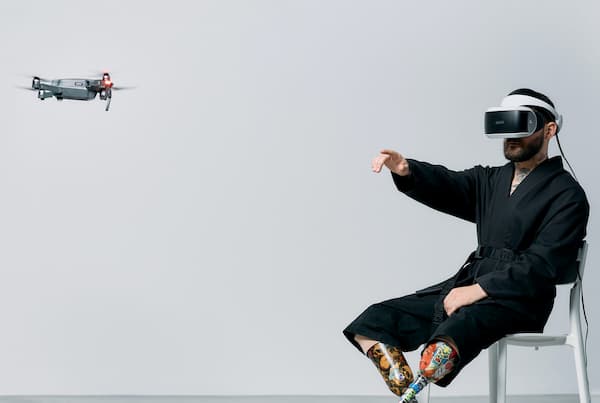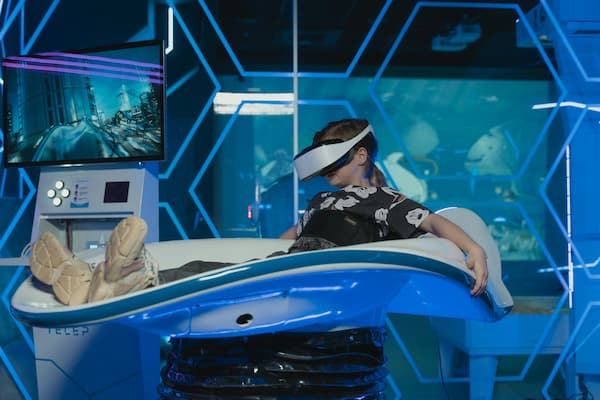User Experience
User Experience (UX) has evolved into a critical aspect of design and technology, encompassing the holistic interaction users have with products, services, or systems. This article provides a comprehensive exploration of User Experience, covering its definition, key components, measurement methods, and its impact on various industries.
Understanding User Experience

User Experience test, controlling a drone with VR glasses
User Experience refers to the overall experience a person has while interacting with a product, system, or service.
It encompasses aspects of usability, accessibility, aesthetics, and the emotional response of the user.
In recent years, UX has become a pivotal factor in the success of digital products and services.
Key Components of User Experience
- Usability: The effectiveness, efficiency, and satisfaction with which users achieve their goals in a particular environment.
- Accessibility: Ensuring that products are usable by people with disabilities, providing an inclusive experience for all users.
- Aesthetics: The visual and sensory appeal of the design, influencing the emotional response of users.
- Cognitive Load: The mental effort required by users to understand and interact with a system.
- Emotional Design: Creating products that evoke positive emotions, fostering a connection between the user and the product.
Measurement Methods
- Usability Testing: Direct observation of users interacting with a system to identify issues and areas for improvement.
- Surveys and Questionnaires: Gathering user feedback on their perceptions, preferences, and overall satisfaction.
- Analytics and Metrics: Tracking user behavior, engagement, and performance through data analysis.
- User Interviews: In-depth conversations with users to gain insights into their needs, expectations, and pain points.

Data View
Impact on Industries
- Technology and Software: In the tech industry, a seamless and enjoyable UX is essential for the success of applications, websites, and software.
- E-commerce: Positive user experiences contribute to higher conversion rates and customer loyalty in online shopping.
- Healthcare: User-centered design in healthcare systems enhances patient engagement and adherence to medical protocols.
- Automotive: In-car interfaces and connectivity are designed with UX principles to ensure safe and intuitive interactions for drivers and passengers.
- and many more...
Future Trends and Challenges
- Personalization: Tailoring experiences based on user preferences and behavior.
- Augmented Reality (AR) and Virtual Reality (VR): Immersive experiences that redefine how users interact with digital environments.
- Ethical Considerations: Balancing user convenience with privacy and ethical use of data.
- Cross-Platform Consistency: Maintaining a consistent and harmonious UX across various devices and platforms.

UX testing in Virtual-Reality-Environment
User Experience is a multifaceted field crucial for the success of modern design and technology. The understanding and implementation of key components such as usability, accessibility, aesthetics, cognitive load, and emotional design are paramount.Measurement methods, including usability testing, surveys, analytics, and user interviews, provide valuable insights for continuous improvement.
The impact of User Experience spans across industries, influencing the technological landscape, e-commerce practices, healthcare systems, and automotive design. A positive and user-centric approach is a driving force behind customer satisfaction, loyalty, and overall success in today's competitive markets.
Looking forward, the future of User Experience involves trends like personalization, immersive technologies such as Augmented Reality and Virtual Reality, and ethical considerations in data usage. Navigating challenges related to cross-platform consistency and privacy concerns will be essential for UX professionals and designers.
In essence, prioritizing User Experience is not just a design philosophy but a strategic business decision. As technology advances and user expectations evolve, the field of User Experience will continue to shape the way we interact with the digital world, ensuring that products and services are not only functional but also delightful and meaningful for users.

Discover more - Mangold is happy to help!
